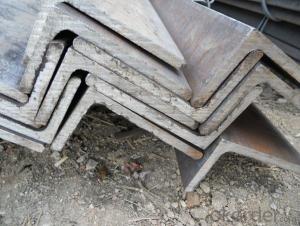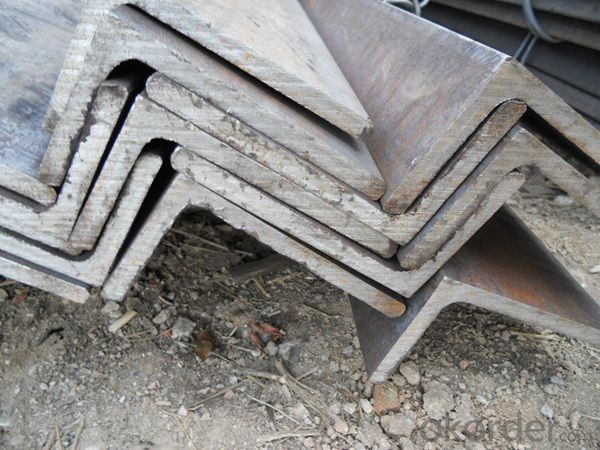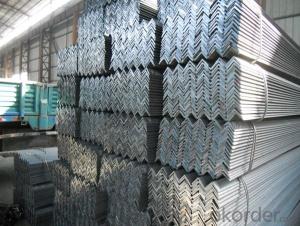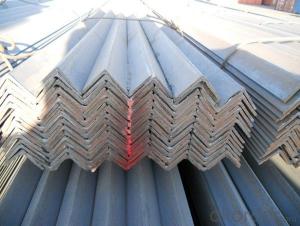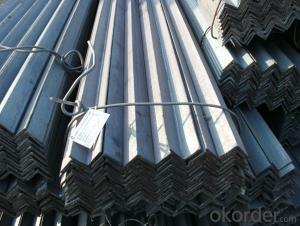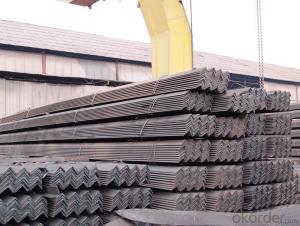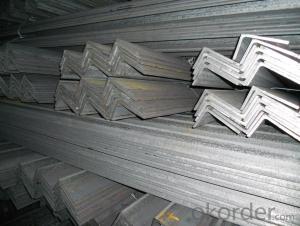Steel Unequal Angle Beams for Structure of Construction
- Loading Port:
- Tianjin
- Payment Terms:
- TT or LC
- Min Order Qty:
- 25 m.t.
- Supply Capability:
- 200000 m.t./month
OKorder Service Pledge
OKorder Financial Service
You Might Also Like
Product Description:
OKorder is offering Steel Unequal Angle Beams for Structure of Construction at great prices with worldwide shipping. Our supplier is a world-class manufacturer of steel, with our products utilized the world over. OKorder annually supplies products to African, South American and Asian markets. We provide quotations within 24 hours of receiving an inquiry and guarantee competitive prices.
Product Applications:
Steel Unequal Angle Beams for Structure of Construction are ideal for structural applications and are widely used in the construction of buildings and bridges, and the manufacturing, petrochemical, and transportation industries.
Product Advantages:
OKorder's Steel Unequal Angle Beams for Structure of Construction are durable, strong, and wide variety of sizes.
Main Product Features:
· Premium quality
· Prompt delivery & seaworthy packing (30 days after receiving deposit)
· Can be recycled and reused
· Mill test certification
· Professional Service
· Competitive pricing
Product Specifications:
Manufacture: Hot rolled
Grade: Q195 – 235
Certificates: ISO, SGS, BV, CIQ
Length: 6m – 12m, as per customer request
Packaging: Export packing, nude packing, bundled
| UNEQUAL ANGLE STEEL | |||||
| size(mm) | a(mm) | a1(mm) | thickness(mm) | kg/m | length(m) |
| 75*50*5 | 75 | 50 | 5 | 4.808 | 6m,9m,12m |
| 75*50*6 | 75 | 50 | 6 | 5.699 | 6m,9m,12m |
| 75*50*8 | 75 | 50 | 8 | 7.431 | 6m,9m,12m |
| 100*75*7 | 100 | 75 | 7 | 9.34 | 6m,9m,12m |
| 100*75*8 | 100 | 75 | 8 | 10.6 | 6m,9m,12m |
| 100*75*9 | 100 | 75 | 9 | 11.8 | 6m,9m,12m |
| 100*75*10 | 100 | 75 | 10 | 13 | 6m,9m,12m |
| 100*75*12 | 100 | 75 | 12 | 15.4 | 6m,9m,12m |
| 125*75*7 | 125 | 75 | 7 | 10.7 | 6m,9m,12m |
| 125*75*8 | 125 | 75 | 8 | 12.2 | 6m,9m,12m |
| 125*75*9 | 125 | 75 | 9 | 13.6 | 6m,9m,12m |
| 125*75*10 | 125 | 75 | 10 | 15 | 6m,9m,12m |
| 125*75*12 | 125 | 75 | 12 | 17.8 | 6m,9m,12m |
| 150*90*8 | 150 | 90 | 8 | 14.7 | 6m,9m,12m |
| 150*90*9 | 150 | 90 | 9 | 16.4 | 6m,9m,12m |
| 150*90*10 | 150 | 90 | 10 | 18.2 | 6m,9m,12m |
| 150*90*12 | 150 | 90 | 12 | 21.6 | 6m,9m,12m |
| 200*100*10 | 200 | 100 | 10 | 23 | 6m,9m,12m |
| 200*100*12 | 200 | 100 | 12 | 27.62 | 6m,9m,12m |
| 200*100*15 | 200 | 100 | 15 | 34.04 | 6m,9m,12m |
FAQ:
Q1: Why buy Materials & Equipment from OKorder.com?
A1: All products offered byOKorder.com are carefully selected from China's most reliable manufacturing enterprises. Through its ISO certifications, OKorder.com adheres to the highest standards and a commitment to supply chain safety and customer satisfaction.
Q2: How many tons of steel products could be loaded in containers?
A2: Usually the steel products are delivered by bulk vessel because of the large quantity and the freight. However, there are no bulk vessel enter some seaports so that we have to deliver the cargo by containers. The 6m steel product can be loaded in 20FT container, but the quantity is changed according to the size, usually from 18tons to 25tons.
Q3: How soon can we receive the product after purchase?
A3: Within three days of placing an order, we will arrange production. The normal sizes with the normal grade can be produced within one month. The specific shipping date is dependent upon international and government factors, the delivery to international main port about 45-60days
Images:
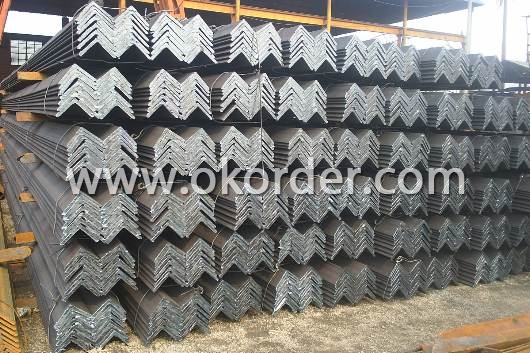
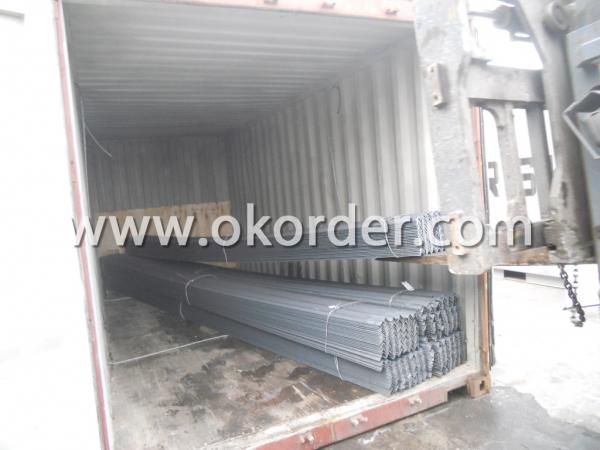
- Q: Are steel angles magnetic?
- Yes, steel angles are magnetic. Steel is a ferromagnetic material, which means it can be magnetized and attracted to a magnet. Steel angles, being made of steel, inherit this magnetic property. The presence of iron, along with other elements, in the composition of steel makes it responsive to magnetic fields. This property is often utilized in various applications such as in the construction industry, where steel angles are commonly used for structural support.
- Q: What is the maximum allowable torsional buckling stress for a steel angle?
- The maximum allowable torsional buckling stress for a steel angle depends on various factors such as the material properties, angle dimensions, and the specific design code or standard being followed. Therefore, without specific information, it is not possible to provide a definitive answer. It is recommended to consult the relevant design code or a structural engineer to determine the maximum allowable torsional buckling stress for a steel angle.
- Q: Can steel angles be used in mining or quarrying machinery?
- Steel angles are indeed applicable in mining or quarrying machinery. They offer structural support and reinforcement to different machinery components used in these sectors. Frames, supports, and brackets for equipment like crushers, conveyors, and screens are often constructed using steel angles. Due to their high strength and durability, steel angles can withstand the heavy loads, vibrations, and harsh operating conditions commonly experienced in mining or quarrying operations. Moreover, steel angles can be easily fabricated and welded to meet specific design needs, making them a flexible option for machinery applications in these industries.
- Q: What is the difference between the main keel and the angle steel and the channel steel?
- Light steel keel is made of high-quality continuous hot-dip galvanized sheet and used as raw material and rolled by cold bending technology. It is used for decorative design of non load bearing wall and building roof with plasterboard, decorative gypsum board and other lightweight board. The utility model is suitable for the decoration of the roof of various buildings, the internal and external wall of the building and the basic material of the trellis suspended ceiling. According to the use of ceiling keel and partition keel, in accordance with the form of section V, C, T, L keel. Ceiling keel is divided into: the main keel and vice keel. The main keel is the weight of the weight of the suspended ceiling.
- Q: How do steel angles compare to wooden beams?
- Steel angles are often preferred over wooden beams due to their superior strength and durability. Steel angles have a higher load-bearing capacity, making them suitable for supporting heavier structures. They are also fire-resistant and less susceptible to warping, rotting, or termite infestation, which are common issues with wooden beams. Additionally, steel angles are more versatile as they can be easily customized and shaped to fit specific construction requirements.
- Q: How do steel angles contribute to the overall aesthetics of a building?
- There are several ways in which steel angles can enhance the aesthetics of a building. First and foremost, their sleek and clean lines can give a contemporary touch to the structure, adding a sense of modern style. Moreover, the angular shape of steel angles can create captivating patterns and forms, bringing depth and dimension to the building's exterior. Additionally, architects can creatively employ steel angles to accentuate architectural features and introduce unique design elements. They can be integrated into the building's façade or used as decorative elements to draw attention to specific areas and generate visual interest. For instance, steel angles can be used to frame windows or doors, establishing a striking contrast with the surrounding materials. In combination with materials like glass or concrete, steel angles can also produce interesting shadows and reflections. This interplay of light and shadow imparts a dynamic and ever-changing quality to the building's appearance, resulting in a visually captivating effect. Furthermore, steel angles offer remarkable versatility and can be easily tailored to meet the specific design requirements of a building. They can be cut, bent, and welded into various shapes and sizes, enabling architects and designers to explore limitless possibilities in terms of form and composition. This design flexibility allows for the creation of unique structures that are visually appealing and stand out from the rest. In conclusion, steel angles play a pivotal role in enhancing the overall aesthetics of a building by providing a sleek and modern look, generating visually captivating patterns and forms, accentuating architectural features, creating intriguing shadows and reflections, as well as offering endless design possibilities. Their versatility and customization options make them an invaluable tool for architects and designers in creating visually captivating and aesthetically pleasing buildings.
- Q: Can steel angles be used in agricultural or farming structures?
- Yes, steel angles can be used in agricultural or farming structures. Steel angles, with their L-shaped profile, provide excellent structural support and are commonly used in construction projects. In agricultural or farming structures, steel angles can be used for various purposes such as framing for barns, sheds, or storage facilities. They can also be used for constructing fencing systems, gates, or other livestock enclosures. The durability and strength of steel angles make them ideal for withstanding the harsh outdoor conditions and heavy loads typically found in agricultural and farming environments. Additionally, steel angles can be easily welded or bolted together, allowing for flexible and efficient construction methods. Overall, steel angles are a practical and reliable choice for incorporating into agricultural or farming structures.
- Q: How do you calculate the moment capacity of a steel angle?
- To calculate the moment capacity of a steel angle, several factors need to be considered. Firstly, the geometry of the angle needs to be determined, including the dimensions of the flanges and the web. The width of the flanges (b) and the thickness of the flanges (tf) and the web (tw) are crucial parameters. Next, the yield strength of the steel material needs to be known. This value represents the stress level at which the steel begins to permanently deform. It can be obtained from the material specifications or testing. The moment capacity of a steel angle can then be calculated using the following equation: Mn = Z × Fy Where: Mn is the moment capacity of the angle (in lb-ft or N-m) Z is the plastic section modulus of the angle (in^3 or mm^3) Fy is the yield strength of the steel material (in psi or MPa) The plastic section modulus (Z) is a measure of the shape's resistance to bending. It can be found in reference tables or calculated using equations specific to the angle's geometry. Once the values for Z and Fy have been determined, they can be plugged into the equation to calculate the moment capacity (Mn) of the steel angle. It is important to note that this calculation assumes elastic behavior of the steel angle and does not account for factors such as strain hardening or local buckling. Additionally, it is crucial to check the calculated moment capacity against the design requirements and safety factors to ensure the angle is suitable for the intended application.
- Q: How are steel angles inspected for quality and compliance with standards?
- Steel angles are inspected for quality and compliance with standards through a series of rigorous tests and visual inspections. These inspections include dimensional checks, visual examination for surface defects, and verification of mechanical properties such as tensile strength and yield strength. Additionally, the angles are subjected to non-destructive testing methods such as ultrasonic and magnetic particle testing to detect any internal flaws or defects. Compliance with standards is ensured by comparing the test results with the specified requirements outlined in the relevant standards and specifications.
- Q: How are steel angles protected against abrasion?
- Steel angles are commonly used in construction and industrial applications, where they are subject to various forms of abrasion. To protect steel angles against abrasion, several methods are employed. One common method is the application of protective coatings. These coatings can be in the form of paints, epoxy coatings, or other specialized coatings designed for abrasion resistance. The coatings act as a barrier between the steel surface and the abrasive elements, preventing direct contact and reducing the wear and tear caused by friction. Another method is the use of rubber or plastic linings. These linings are typically applied to the surfaces of the steel angles that are most prone to abrasion. The rubber or plastic material absorbs the impact of abrasive forces, cushioning the steel and reducing the wear rate. Additionally, these linings provide an extra layer of protection against corrosion and chemical attacks. In some cases, steel angles may undergo a process called hardening or heat treatment. This involves subjecting the steel to high temperatures and then rapidly cooling it. This process alters the microstructure of the steel, making it harder and more resistant to abrasion. Heat-treated steel angles are commonly used in high-wear environments such as mining and material handling industries. Furthermore, engineers may opt to design steel angles with specific profiles or shapes that offer better resistance to abrasion. These profiles can include rounded edges, chamfers, or other features that minimize direct contact with abrasive materials. Overall, the protection against abrasion for steel angles involves a combination of protective coatings, linings, heat treatment, and thoughtful design. By implementing these measures, the lifespan and performance of steel angles can be significantly prolonged, reducing maintenance costs and ensuring their durability in abrasive environments.
Send your message to us
Steel Unequal Angle Beams for Structure of Construction
- Loading Port:
- Tianjin
- Payment Terms:
- TT or LC
- Min Order Qty:
- 25 m.t.
- Supply Capability:
- 200000 m.t./month
OKorder Service Pledge
OKorder Financial Service
Similar products
Hot products
Hot Searches
Related keywords
